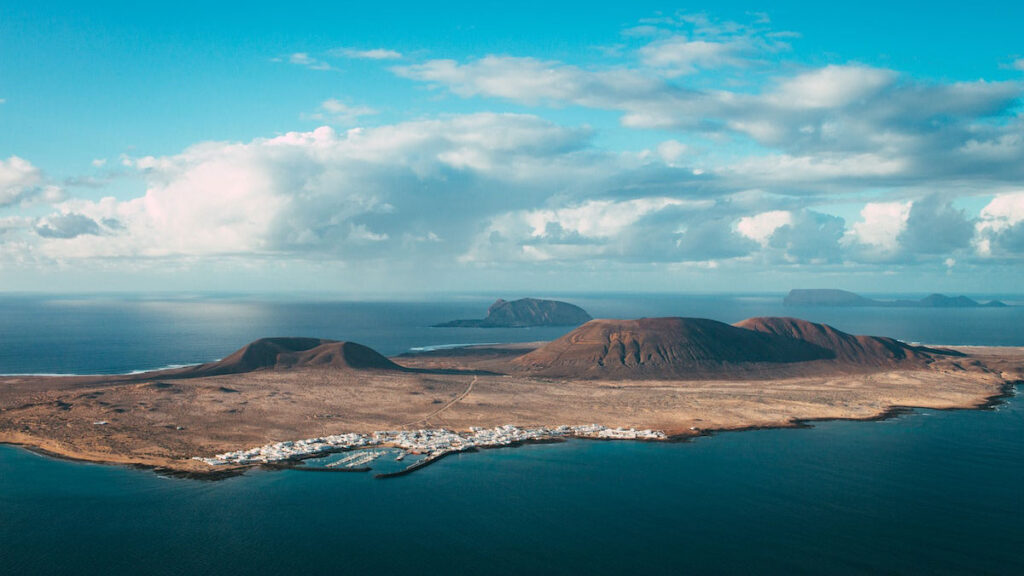The rugged Canary Islands are one of the most popular dive destinations in Spain, offering diving at UNESCO Biosphere Reserves and marine reserves teeming with life. There are shallow reefs just off the beaches, deep walls, dramatic lava landscapes, wrecks, and the underwater equivalent of the Giant’s Causeway to explore. With a unique mixture of child-friendly resorts and remote islands with few tourists, there is something for everyone at these remarkable islands. But which is the best island for you? Find out more and get inspired for your next dive vacation with our ultimate guide to diving in the Canary Islands.
8 great places to go diving in the Canary Islands
Tenerife
Tenerife, the largest of the Canary Islands, hosts Spain’s tallest peak, Mount Teide and has many beaches, plus excellent hiking in the verdant Anaga Mountains. It is one of the most child-friendly destinations in Spain, with plenty of resorts and activities to keep kids entertained.
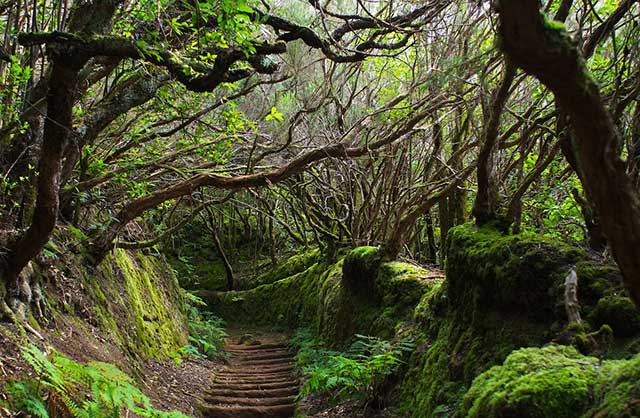
Below the water, Tenerife boasts jaw-dropping rocky structures, lava caves, and excellent wreck diving. There are numerous dive sites accessible from shore and by boat, hosting everything from vibrant nudibranchs to dolphins, sea turtles, and a diverse selection of rays.
The Wall hosts countless rays, including bull rays, stingrays and eagle rays, and the El Condesito wreck is a must; surrounded by a remarkable hexagonal basalt column reef.
Whilst there are plenty of shallow sites, Tenerife also has numerous dive sites at 30 to 40+ meters deep, making it a great destination for tech divers. La Rapadura has one of the most amazing underwater landscapes of the Canary Islands, with prismatic blocks jutting out of a rocky platform. This demanding, deep dive to 45 meters rewards you with an underwater equivalent of the Giant’s Causeway.
Lanzarote
Lanzarote is the fourth largest of the Canary Islands. It is famous for its vast lava fields, shallow seabed that hosts a wealth of biodiversity, and golden beaches lapped by clear, cyan waters. Lanzarote is so unique that the entire island was declared a UNESCO Biosphere Reserve in 1993.
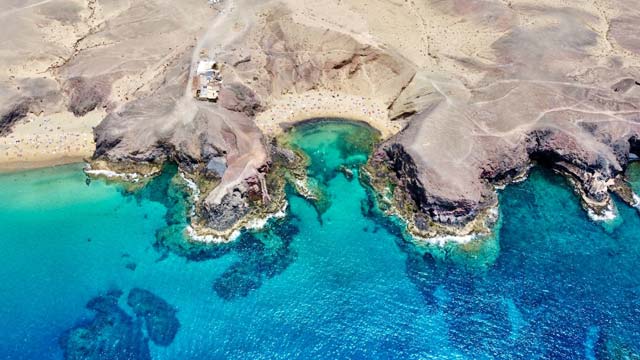 Image: UnsplashImage: Unsplash
Image: UnsplashImage: UnsplashThe volcanic and rock formations of Lanzarote have created a fascinating underwater world, with visibility reaching up to 40 meters and an abundance of marine life. New divers can enjoy Lanzarote’s shallow shore and boat dives, whilst experienced divers explore impressive walls plunging down to 40 meters, plus underwater caves, wrecks, and volcanic tunnels.
The Atlantic Museum is one of the many highlights of Lanzarote diving. It is one of the only underwater museums in the world and contains impressive sculptures in crystal-clear waters.
Fuerteventura
Fuerteventura, the second largest of the Canary Islands is a short hop from Lanzarote and is fringed with idyllic white-sand beaches reminiscent of the Maldives and Caribbean.
 Image: UnsplashImage: Unsplash
Image: UnsplashImage: UnsplashWith its endless beaches cooled by the wind, this is a popular island for watersports, especially windsurfing and waterskiing. Below the water, there is a world of drop-offs, canyons, volcanic and sandy landscapes to explore.
Sitting close to Africa, this island has a warm climate all year, meaning you can go diving in Fuerteventura at any time. With calm, clear waters and abundant shallow reefs busy with fish life, Lanzarote is a great place to get your Open Water Diver certification.
There are numerous shore dives, including deep and night diving options from shore. With angel sharks, numerous rays, large pelagic fish, groupers, moray eels, and a wealth of smaller reef life, you will be spoilt for choice wherever you choose to dive.
Gran Canaria
Gran Canaria is most famous for its beaches, with over 80 stretches of golden sand around this popular island. With a stunning coastline, pine forests, and undulating mountains, this island has numerous great hikes and walks for your non-diving days.
 Image: UnsplashImage: Unsplash
Image: UnsplashImage: UnsplashBut first, make the most of diving in Gran Canaria. This island offers the widest variety of dive types in the Canary Islands, with multiple sites to suit all experience levels and fantastic dive conditions year-round.
Sardina del Norte is one of the most famous dive sites on Gran Canaria, known for its exceptional biodiversity. Sitting in a large, sheltered bay, this dive site is easy to explore and is busy with amberjacks, angel sharks, stingrays, mackerels, and seahorses.
Experienced divers won’t want to miss diving the 35-meter-deep Arona wreck. At around 100 meters long, this wreck is an impressive sight and is home to schools of barracuda, plus stingrays and angel sharks.
La Gomera
Peaceful La Gomera doesn’t have large hotels or a vibrant nightlife. Instead, this island offers plenty of nature and tranquility, with lush mountain forests and charming Canarian towns.
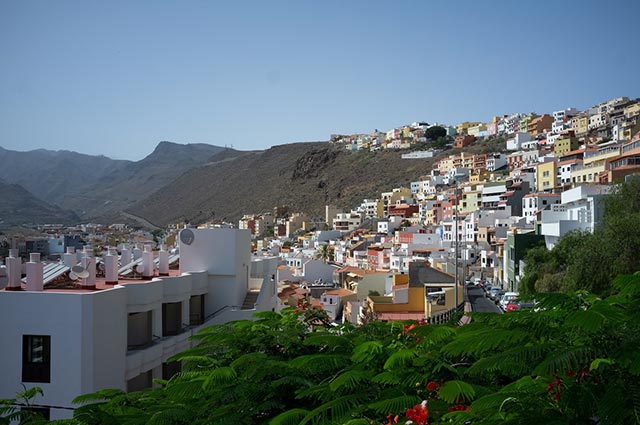 Image: UnsplashImage: Unsplash
Image: UnsplashImage: UnsplashAs the smallest of the main Canary Islands, La Gomera’s waters are more untouched than the other islands, allowing the marine life to thrive. It is one of the best islands for whale and dolphin watching.
Despite being small, La Gomera has over twenty dive sites and new ones are being discovered all of the time. There are drift dives, caves and deep reefs for experienced divers, plus easy, shallow dives for beginners.
With few dive boats and a distinct lack of divers in the water, this is a great destination for underwater photographers. You can enjoy peaceful diving without curtains of bubbles and meet some of the hundreds of fish species that call La Gomera home.
La Palma
La Palma, also known as ‘the beautiful island’, has forested landscapes dotted with volcanoes and hosts the huge crater-shaped Caldera de Taburiente National Park. This stunning island is also a Starlight Reserve. It is no surprise that this remarkable island is a UNESCO Biosphere Reserve.
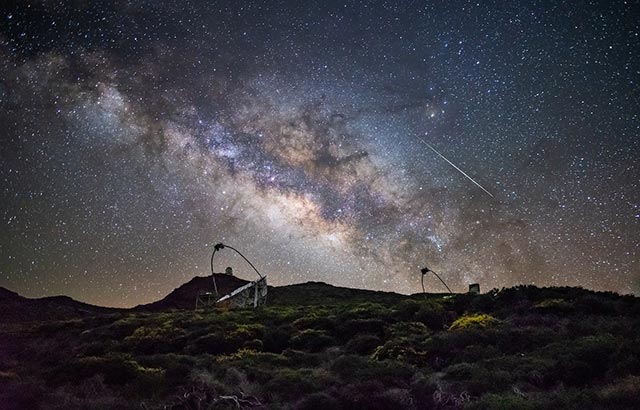 Image: UnsplashImage: Unsplash
Image: UnsplashImage: UnsplashLa Palma’s underwater volcanic landscape is dotted with caves, arches, lava tubes, and dramatic walls. All of which are home to numerous species, including visiting whale sharks and manta rays. In 2021, a volcanic eruption occurred at La Palma, creating new underwater lava flows and dive sites amidst the devastation.
For a dive vacation with excellent marine life encounters and the chance to explore brand new volcanic dive sites, La Palma is a great choice.
El Hierro
Being the second-smallest of the Canary Islands, and the farthest south and west, El Hierro is a peaceful destination far from the tourist trail. With more than forty dive sites, it is a paradise for scuba divers.
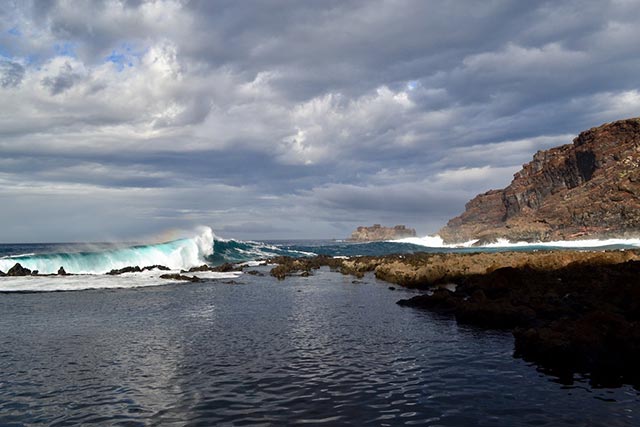
There are depths of up to 3000 meters just a few miles from El Hierro’s coast and the water visibility can reach a staggering 50 meters. There are dive sites for all levels of diver, including lava tongues, walls, and underwater mountain landscapes.
Most notably, El Hierro is home to the beautiful Le Restinga Marine Reserve; an internationally-acclaimed sanctuary for tuna, stingrays, dolphins, sea turtles, barracudas, and visiting whale sharks. In 2011, an underwater volcano erupted just off El Hierro, regenerating the unique underwater landscape and creating an even richer marine biodiversity than before.
La Graciosa
Last but not least, La Graciosa is the smallest of the inhabited Canary Islands and is well worth visiting for its fantastic beaches and scuba diving. This small island is part of the largest marine reserve in Europe and boasts exceptional landscapes in one of the most biodiverse ecosystems in the world.
La Graciosa’s rocky caves, crevices, and tunnels host impressive schools of fish and a variety of crustaceans. There are also deep coral colonies and sandy bottoms hiding numerous stingrays. It is so unique that scientists from around the world visit La Graciosa to study the marine life found there.
What marine life can you see when diving in the Canary Islands?
The underwater volcanic geology of the Canary Islands has created depths up to 3000 meters, with diverse structures that host a variety of marine life. There are abundant reef and pelagic fish species in these rich waters, plus dolphins, whales, sea turtles, numerous types of rays, and a range of crustaceans and mollusks.
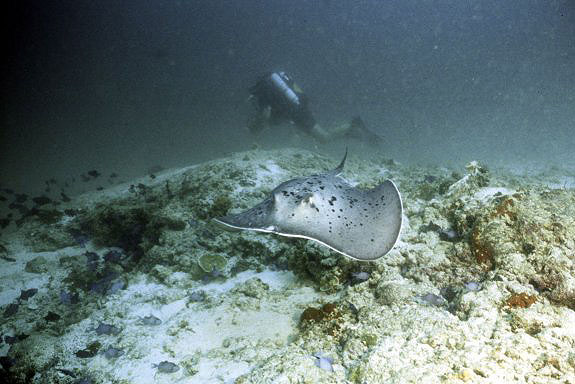 Image: Tim NicholsonImage: Tim Nicholson
Image: Tim NicholsonImage: Tim NicholsonWhat experience do you need to go diving in the Canary Islands?
Diving in the Canary Islands is suitable for all experience levels. It is a great destination to try scuba diving for the first time, and there are numerous exciting dives for experienced divers and tech divers.
When is the best time to go diving in the Canary Islands?
With year-round warm waters and a sunny climate, you can enjoy diving in the Canary Islands all year.
Kathryn Curzon, a shark conservationist and dive travel writer for SSI (Scuba Schools International), wrote this article.
Image credits:
- Lanzarote: Unsplash
- Lanzarote: Unsplash
- Fuerteventura: Unsplash
- Gran Canaria: Unsplash
- La Gomera: Unsplash
- La Palma: Unsplash
- Marble Ray: Tim Nicholson
